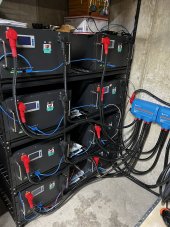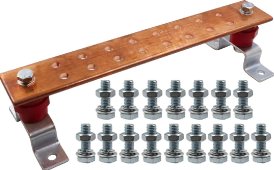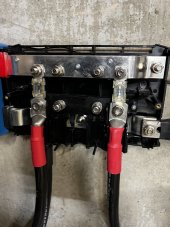6
629658
Guest
Perfect example the materials for this buss system is $153.00 plus that 1/8” copper wouldn’t handle anything near 1000A. No covers so if anything falls against it?? Nothing for the time expended. Ok if you want to experiment and DIY but no way id put it in my system. For the price of materials you can buy a Victron buss system. The amount of stored energy we are dealing with is no joke. If it gets away from you bad things are guaranteed to happen.I build my busses to fit my projects. Amazon sells great quality copper bars, posts and tinning solution. You could use a post every forth position and bolts for the others. I use 1/8” x 2” or 1/4” thick. The posts are available in different sizes and if the bolt is too short or long it’s easy to swap out a different stainless bolt ( it’s not molded in). The tinning solution is actually a lot more effective and resistant to wear than anticipated. Just buff with 3M cloth to remove oxidation and dobb on solution (shake well) and rinse in warm water. Looks professional. To work the copper all you need is a square, scribe, jigsaw, center punch, drill, sketch and imagination.
View attachment 142343View attachment 142344View attachment 142345View attachment 142346View attachment 142347
Last edited by a moderator:





